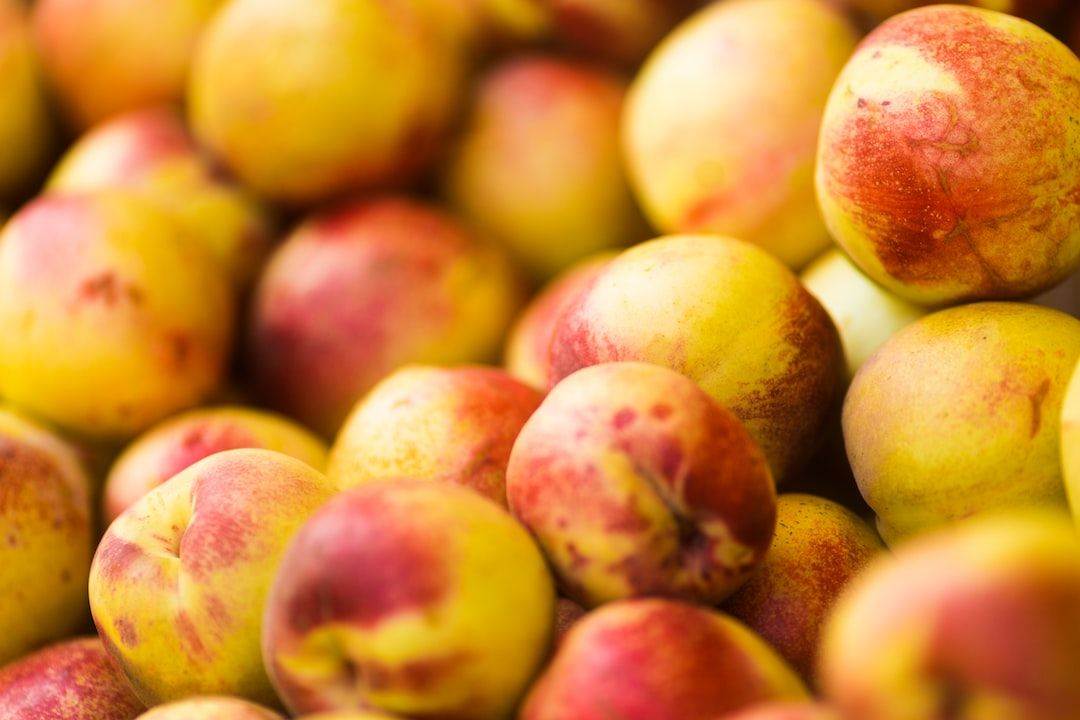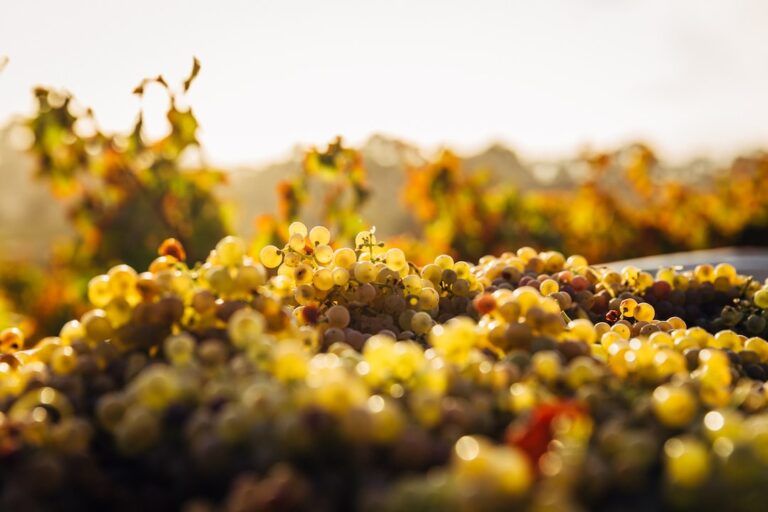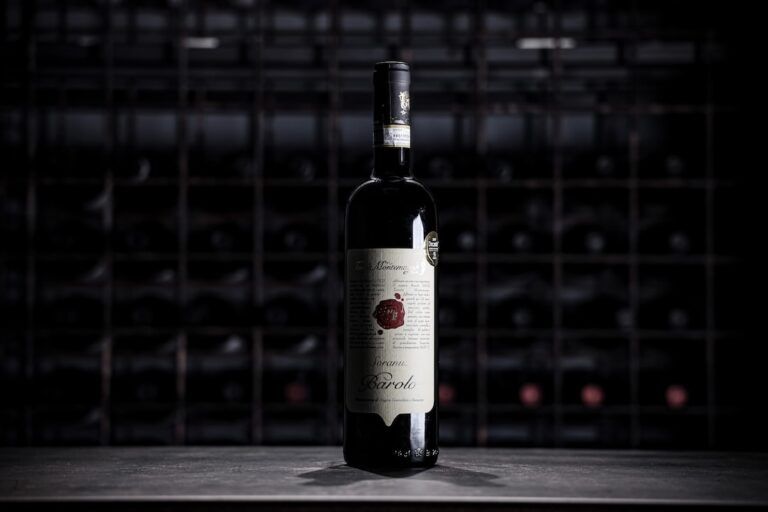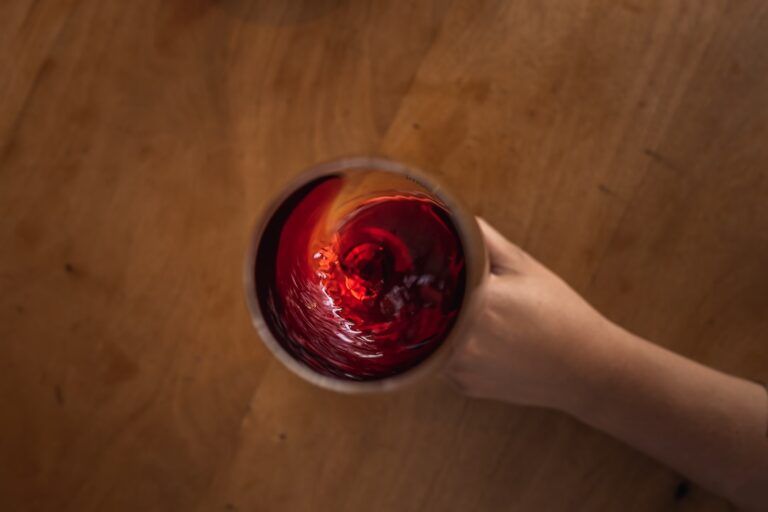Zinfandel: A fruity red wine with flavors of raspberry, blackberry, and spices.
Zinfandel is a popular red wine known for its fruity flavors and versatility. It is loved by wine enthusiasts around the world for its bold and robust characteristics. Zinfandel is often described as a full-bodied wine with high alcohol content and a range of flavors that can include blackberry, raspberry, cherry, and spice.
One of the reasons why Zinfandel is so popular among wine lovers is its ability to pair well with a variety of foods. Whether you’re enjoying a juicy steak or a spicy barbecue, Zinfandel can complement the flavors and enhance the overall dining experience. Its versatility makes it a go-to choice for many wine enthusiasts.
The History and Origin of Zinfandel Grapes
The origin of Zinfandel grapes has been a subject of much debate and controversy. While it is widely believed that Zinfandel originated in Croatia, it was brought to the United States in the 19th century and found its home in California.
Zinfandel grapes were first planted in California during the Gold Rush era, and they quickly gained popularity among the early settlers. The warm climate and fertile soil of California proved to be ideal for growing Zinfandel grapes, and the wine produced from these grapes became known as “California’s own.”
However, the true origin of Zinfandel grapes remained a mystery for many years. It wasn’t until the 1990s that DNA testing revealed that Zinfandel is actually related to an ancient Croatian grape variety called Crljenak Kaštelanski. This discovery put an end to the speculation surrounding the origin of Zinfandel grapes.
Understanding the Flavors and Aromas of Zinfandel Wine
Zinfandel wine is known for its rich flavors and aromas. The typical flavors found in Zinfandel include blackberry, raspberry, cherry, and plum. These fruity flavors are often accompanied by notes of spice, such as black pepper and cinnamon.
The aromas of Zinfandel can vary depending on the region and winemaking techniques used. In general, Zinfandel wines have a pronounced aroma of ripe fruit, with hints of vanilla and oak from the aging process. The intensity of these aromas can range from subtle to bold, depending on the style of Zinfandel.
The influence of terroir on the taste and aroma of Zinfandel wine is also significant. The climate, soil composition, and vineyard location all play a role in shaping the characteristics of the wine. For example, Zinfandel grapes grown in cooler regions may have more acidity and a lighter body, while those grown in warmer regions may have higher alcohol content and a fuller body.
The Winemaking Process of Zinfandel: From Vine to Bottle
The winemaking process of Zinfandel involves several steps, from harvesting the grapes to bottling the finished wine. The first step is to carefully select and harvest the ripest Zinfandel grapes. This is typically done by hand to ensure that only the best grapes are used.
Once the grapes are harvested, they are crushed and destemmed to separate the juice from the skins and stems. The juice is then fermented in stainless steel tanks or oak barrels, depending on the desired style of the wine. During fermentation, yeast converts the sugars in the grape juice into alcohol, resulting in the production of wine.
After fermentation, the wine is aged in oak barrels for a period of time to develop its flavors and aromas. The type of oak used and the length of aging can vary depending on the winemaker’s preference. Some Zinfandel wines are aged for a short period of time to preserve their fruity flavors, while others are aged for longer to develop more complex characteristics.
Pairing Zinfandel with Foods: A Perfect Match for Grilled Meats
Zinfandel is often considered a perfect match for grilled meats due to its bold flavors and high alcohol content. The fruity and spicy characteristics of Zinfandel can complement the smoky and savory flavors of grilled meats, creating a harmonious pairing.
When pairing Zinfandel with grilled meats, it is important to consider the intensity of the flavors. For lighter meats such as chicken or pork, a lighter-bodied Zinfandel with less oak aging can be a good choice. For richer and more flavorful meats like steak or lamb, a full-bodied Zinfandel with more oak aging can provide a perfect balance.
In addition to grilled meats, Zinfandel can also pair well with other dishes such as barbecue, spicy sausages, and hearty stews. The bold flavors and high alcohol content of Zinfandel can stand up to the intense flavors of these dishes, creating a memorable dining experience.
Exploring the Different Styles of Zinfandel Wine

Zinfandel wine comes in a variety of styles, each with its own unique characteristics. The three main styles of Zinfandel are:
1. Red Zinfandel: This is the most common style of Zinfandel and is known for its bold flavors and high alcohol content. Red Zinfandels are typically full-bodied with rich fruit flavors and spicy notes. They can range from dry to slightly sweet, depending on the winemaker’s preference.
2. White Zinfandel: White Zinfandel is a blush wine made from the same grape as red Zinfandel. It is known for its light and refreshing characteristics, with flavors of strawberry and watermelon. White Zinfandel is often slightly sweet and is best served chilled.
3. Late Harvest Zinfandel: Late Harvest Zinfandels are made from grapes that have been left on the vine longer than usual, allowing them to develop higher sugar levels. This results in a sweeter wine with flavors of dried fruit and honey. Late Harvest Zinfandels are often enjoyed as dessert wines.
The Best Regions for Zinfandel Production: California and Beyond
California is the most well-known region for Zinfandel production, with several sub-regions producing exceptional wines. The most famous of these is the Dry Creek Valley in Sonoma County, which is known for its high-quality Zinfandel grapes. Other notable regions in California include the Russian River Valley, Napa Valley, and Paso Robles.
Outside of California, Zinfandel is also grown in other parts of the world, although on a smaller scale. In Italy, Zinfandel is known as Primitivo and is grown primarily in the region of Puglia. Primitivo wines are similar in style to California Zinfandels, with rich fruit flavors and high alcohol content.
The influence of climate and soil on Zinfandel grapes is significant. In California, the warm climate and well-drained soils contribute to the ripe fruit flavors and high alcohol content of the wines. In Italy, the hot and dry climate of Puglia produces wines with similar characteristics.
Aging Zinfandel: How Time Affects the Taste and Quality of the Wine
Aging can have a significant impact on the taste and quality of Zinfandel wine. While some Zinfandels are meant to be enjoyed young and fresh, others can benefit from aging to develop more complex characteristics.
Young Zinfandels are known for their vibrant fruit flavors and bold tannins. These wines are best enjoyed within a few years of their release to fully appreciate their freshness and intensity.
On the other hand, aged Zinfandels can develop more nuanced flavors and aromas over time. The oak aging process can add notes of vanilla, spice, and toast to the wine, while the tannins soften and become more integrated. Aged Zinfandels can be enjoyed for several years after their release, depending on the style and quality of the wine.
Zinfandel vs. Other Red Wines: How It Stacks Up Against the Competition
When comparing Zinfandel to other popular red wines, it is important to consider its unique characteristics that set it apart from the competition. Zinfandel is known for its bold flavors, high alcohol content, and versatility when it comes to food pairings.
Compared to Cabernet Sauvignon, Zinfandel tends to have a higher alcohol content and a fruitier flavor profile. It is also generally more approachable and can be enjoyed at a younger age.
Compared to Pinot Noir, Zinfandel is fuller-bodied with more intense flavors. Pinot Noir is known for its elegance and finesse, while Zinfandel offers a bolder and more robust experience.
Compared to Syrah/Shiraz, Zinfandel shares some similarities in terms of bold flavors and high alcohol content. However, Zinfandel tends to have more pronounced fruit flavors and a spicier character.
Tips for Enjoying Zinfandel: Serving Temperature, Glassware, and More
To fully enjoy the flavors and aromas of Zinfandel wine, it is important to serve it at the right temperature. Red Zinfandels are best served slightly below room temperature, around 60-65°F (15-18°C). This allows the wine to showcase its fruit flavors without being overly warm.
When it comes to glassware, a large-bowled glass with a wide opening is ideal for capturing the aromas of Zinfandel. This type of glass allows the wine to breathe and enhances the overall tasting experience.
Other tips for enjoying Zinfandel include decanting the wine before serving to allow it to open up and develop its flavors. It is also recommended to pair Zinfandel with foods that can complement its bold characteristics, such as grilled meats, barbecue, and spicy dishes.
In conclusion, Zinfandel is a popular red wine known for its fruity flavors, versatility, and bold characteristics. Its history and origin have been the subject of much debate, but it is widely believed to have originated in Croatia and found its home in California. The flavors and aromas of Zinfandel can vary depending on the region and winemaking techniques used. It pairs well with a variety of foods, especially grilled meats. Zinfandel comes in different styles, each with its own unique characteristics. California is the most well-known region for Zinfandel production, but it is also grown in other parts of the world. Aging can have a significant impact on the taste and quality of Zinfandel wine, and it can be compared to other popular red wines based on its unique characteristics. To fully enjoy Zinfandel, it is important to serve it at the right temperature, use the right glassware, and pair it with complementary foods.
If you’re a fan of Zinfandel, you’ll definitely want to check out this article on wine storage temperature and humidity. Proper storage conditions are essential for preserving the flavors and aromas of your favorite wines, including the fruity notes of raspberry and blackberry found in Zinfandel. Learn more about the importance of temperature and humidity control in maintaining the quality of your wine collection. Read more
FAQs
What is Zinfandel?
Zinfandel is a type of red wine grape that is grown primarily in California. It is known for its fruity flavors of raspberry, blackberry, and spices.
What are the characteristics of Zinfandel wine?
Zinfandel wine is typically medium to full-bodied with high alcohol content. It has a deep red color and is known for its fruity flavors of raspberry, blackberry, and spices. It can also have a hint of pepper or tobacco.
What foods pair well with Zinfandel wine?
Zinfandel wine pairs well with a variety of foods, including grilled meats, spicy dishes, and tomato-based sauces. It also pairs well with strong cheeses like blue cheese or aged cheddar.
What is the history of Zinfandel wine?
Zinfandel wine has a long history in California, dating back to the mid-1800s. It is believed to have originated in Croatia and was brought to the United States by immigrants. Zinfandel was once thought to be a unique American grape variety, but DNA testing has since shown that it is genetically identical to the Croatian grape variety Crljenak Kaštelanski.
What is the alcohol content of Zinfandel wine?
Zinfandel wine typically has a high alcohol content, ranging from 14% to 17%.
What is the best way to serve Zinfandel wine?
Zinfandel wine is best served at room temperature, between 60 and 65 degrees Fahrenheit. It should be decanted for at least 30 minutes before serving to allow the flavors to develop.







